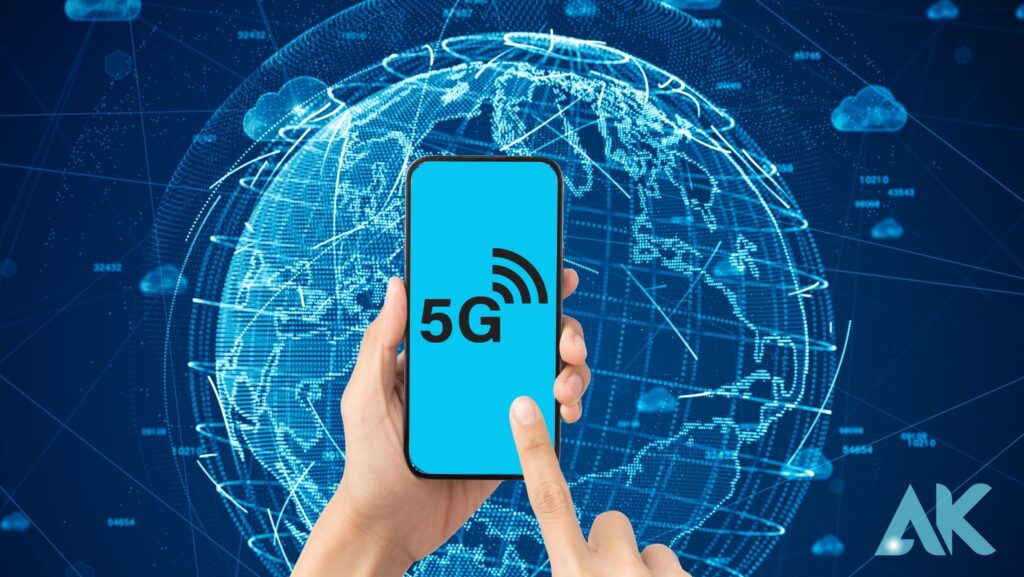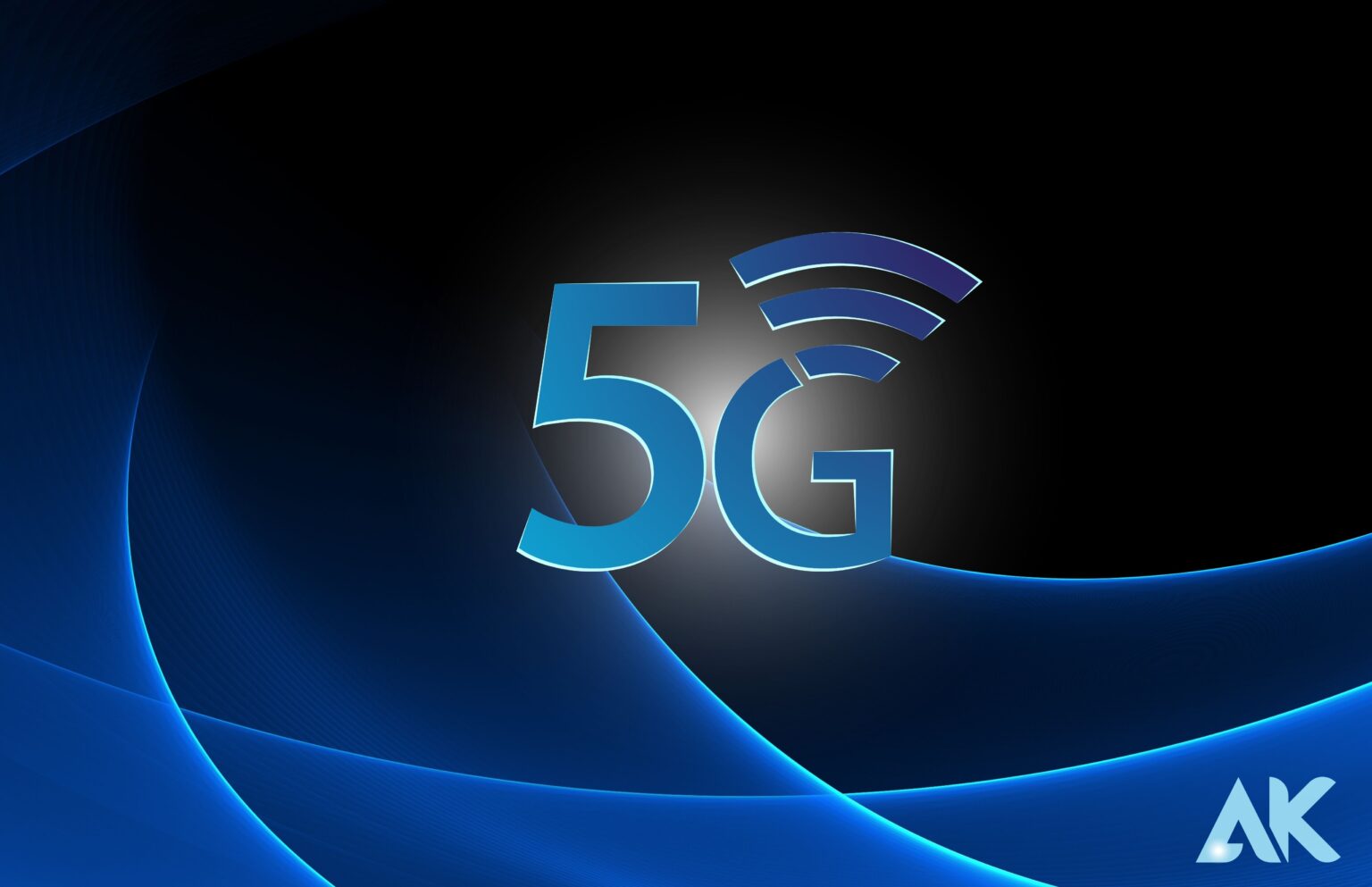A new age of innovation and connectivity has been brought about by the development of fifth-generation (5G) mobile telecom technology, which has the potential to drastically alter the way we work and live.
This most recent mobile technology version claims to improve connectivity with ultra-fast upload and download rates, reduced latency, and increased dependability. 5G’s faster speeds, more simultaneous connection capacity, and enhanced security can revolutionize a range of industries and applications, including manufacturing, transportation, healthcare, and entertainment, in addition to communications and education.
More quickly than any of its predecessors, 5G technology has been embraced since its premiere in 2019 in South Korea, China, and the United States. As per the industry organization GSM Association, there will be over 1 billion 5G connections by the end of 2022.
5G offers more flexibility at a lower cost. It is the first wireless technology that is reliable and fast enough to take on the role of fixed-line broadband connections for applications that are vital to mission success. This makes it possible to connect isolated populations for the first time in places where fixed networks are impossible.
It will take some time for the comparatively larger changes to become apparent globally, though.
In this piece, we examine how 5G will enable a fresh wave of technological innovation.
Improved mobile connections

The fundamental idea behind every advancement in cellular technology is faster data transfer. Every major improvement tries to give faster speeds, from 1G, which can only manage 2 Kbps, to 4G, which supports up to 1Gbps.
With 20 times faster speeds than 4G, 5G offers a plethora of opportunities. In addition to having higher speeds, it also enables several users to connect to a single tower, which helps prevent network congestion at large events like conferences.
In addition, 5G networks provide lower latency than 4G networks. The average reaction time of current 4G connections is between 20 and 40 milliseconds; however, 5G has the potential to reduce that time to as little as one millisecond.
Lightning-Fast Connectivity

5G’s tremendous data transmission speeds—which can be up to 100 times faster than 4G—are among its most obvious effects. The user experience is improved by nearly immediate downloads, high-definition video streaming without buffering, and low latency in a variety of applications, including gaming, augmented reality (AR), virtual reality (VR), and video conferencing.
The work-from-anywhere trend and the gig economy have been bolstered by the availability of 5G networks. Both full-time workers and freelancers can work remotely. Participating in high-bandwidth activities such as video chats, virtual meetings, file uploads, and productivity enhancement is made possible by fast connections and low latency, which remove time and place constraints.
Based on corporate and consumer demand for remote work demands, the number of communication service providers delivering commercial 5G services might rise to 60% by 2024 from 10% in 2020, according to an estimate by research firm Gartner.
Advanced Industrial Production
The “Fourth Industrial Revolution,” or “Industry 4.0,” is made possible by 5G’s improved automation and monitoring capabilities, which have a variety of applications in the manufacturing sector.
5G connectivity may be used in manufacturing facilities to provide collaborative robots, remote asset monitoring, and process automation, all of which can boost productivity. They can also utilize augmented reality to do repairs and sophisticated data analytics to identify and schedule preventative maintenance. One of the main issues facing manufacturers has been unplanned downtime, which hinders them from making the most use of their assets. Unplanned downtime resulting from equipment breakdowns costs $50 billion a year in the United States.
A smart factory, for instance, with all production equipment digitalized and networked, might be made possible by 5G. The plant manager or supervisor doesn’t need to be physically present to oversee and control activities. Alternatively, the manager’s system can receive data on production assets from the smart factory, and the manager can use this information to remotely control robots to automate different jobs.
This methodology not only enhances production efficiency concerning timeliness, precision, and quality, but it also considerably lowers the quantity of human mishaps that occur when carrying out dangerous duties.
Precision farming and resource optimization will be made possible by this degree of automation in the agricultural sector as well.
Internet of Things (IoT) Revolution
5G is a game-changer that will accelerate the development of Internet of Things (IoT) applications because of its ability to handle a vast number of connected devices concurrently. The capacity to manage enormous volumes of data in real-time will be beneficial for linked homes, driverless cars, smart cities, and industrial automation. Our lives will be more convenient as a result, and it will also optimize resource utilization and lower energy use.
5G can accommodate a greater variety of devices, sensors, and wearables since it is more adaptable than standard WiFi networks and enhances data transfer in severe environments, high temperatures, and distant regions.
Advanced Industrial Production
By enabling sophisticated automation and monitoring, 5G has a variety of applications that can improve industrial processes in production and support the “Fourth Industrial Revolution,” or “Industry 4.0.”
5G connectivity can help manufacturing facilities become more efficient by enabling collaborative robots, remote asset monitoring, and process automation. In addition, they can do repairs using augmented reality and discover and schedule preventative maintenance using advanced data analytics. One of the main issues for manufacturers has been unplanned downtime, which keeps assets from being used to their full potential. Equipment failures resulting in unplanned downtime cost the United States $50 billion a year.
A smart factory, for instance, with all production equipment digitalized and networked, might be made possible by 5G. The plant manager or supervisor doesn’t need to be physically present to oversee and control activities. Alternatively, the manager’s system can receive data on production assets from the smart factory, and the manager can use this information to remotely control robots to automate different jobs.
This methodology not only enhances production efficiency concerning timeliness, precision, and quality, but it also considerably lowers the quantity of human mishaps that occur when carrying out dangerous duties.
Precision farming and resource optimization will be made possible by this degree of automation in the agricultural sector as well.
Medical treatment redefined
5G is expected to have a huge positive impact on the healthcare industry, changing how medical care is provided, from telemedicine to remote surgery, data analysis, and training.
With the increasing prevalence of high-quality video consultations and remote patient monitoring, telemedicine will become more efficient and accessible. 5G networks’ low latency makes remote surgery possible, enabling qualified doctors to operate on patients from a distance. This might improve access to healthcare for those living in rural areas and perhaps save lives in emergencies.
Wearables with connectivity can send vital information to healthcare professionals about people with long-term illnesses. Wearable technology, such as smartwatches, can provide data on blood pressure, oxygen saturation, heart rate, and sleep quality. Even personal emergency response systems (PERS) that notify hospitals if a patient passes out can be integrated into these gadgets.
According to the study, the market for wearable medical devices will rise from $20.7 billion to $72.2 billion globally between 2022 and 2030, at a compound annual growth rate (CAGR) of 16.9%. The therapeutic devices category is expected to expand at a CAGR of 20.7%, while the diagnostic devices segment is predicted to grow at a CAGR of 14.3% to $38.2 billion.
Additionally, 5G can facilitate the management of the enormous amounts of data generated by the healthcare sector and the instantaneous transfer of large data files, allowing medical facilities to treat patients more effectively and individually.
Connected, autonomous vehicles
5G networks will make it easier for autonomous vehicles and smart transport systems to become a reality. When linked to 5G networks, advanced driver-assistance systems (ADASs) can offer improved functionality by supplementing the vehicle’s internal sensors with data processed in the cloud or from external sources, such as other vehicles, infrastructure sensors, or ADAS service providers.
For autonomous cars to function safely and effectively, they need dependable, high-speed communication and extremely low latency. When 5G networks are implemented, vehicles will be able to connect with infrastructure and with one another, improving the safety and efficiency of transportation.
Additionally, as traffic management systems become more intelligent, emissions and congestion will decrease. For instance, video systems can alert drivers about impending gridlock so they may choose an alternate route, and traffic lights may even be able to communicate signals directly to automobiles.
To help a driver choose the least congested route, connected traffic lights can transmit data about the traffic conditions on several routes to an ambulance carrying a critically ill patient to a hospital.
Additionally, 5G-connected in-car entertainment and services are available to passengers, improving their trip experience.
According to Juniper Research, there might be 367 million connected cars on the road worldwide in 2027—a 91% increase from 192 million in 2023—thanks to the development of ADAS and the expanding capabilities of in-car infotainment systems.
According to Juniper, 23% of automobile cellular connections will be 5G by 2027, necessitating efficient cooperation between mobile service providers and automakers.
For the operators offering 5G connections, this has $3.6 billion of potential.
Education and training
Another industry that stands to gain a great deal from 5G is education. Fast wireless Internet will increase the accessibility of remote learning, enabling students to take part in online classes. By 2030, the worldwide e-learning industry is expected to have grown to $840.11 billion at a compound annual growth rate (CAGR) of 17.5%.
Through interactive online learning platforms, students may take part in virtual field excursions, labs, and classrooms. These platforms take advantage of 5G’s potential to deliver smooth, excellent experiences that are comparable to conventional face-to-face instruction. The use of virtual and augmented reality in education is becoming increasingly feasible as 5G networks proliferate. These technological advancements can provide students with immersive learning opportunities that improve their comprehension of difficult subjects.
In a virtual operating room, for instance, medical students can rehearse surgical techniques, which not only enhances their proficiency but also lowers the hazards involved in teaching real patients.
Furthermore, 5G can close the digital divide by expanding educational options for workers and students in underprivileged and rural places. High-speed internet enables students in underserved or rural areas to interact with peers and teachers, access online resources, and take advantage of a wider selection of courses.
Augmented and virtual reality
Apart from the field of education, the entertainment sector is about to experience a significant shift propelled by the 5G connection. To be widely adopted, AR and VR applications—which immerse the user in an artificial environment—need 5G’s high bandwidth and low latency. Virtual classrooms may be made available to students globally by educational organizations, and gamers can anticipate engaging gameplay experiences.
By superimposing digital data on the physical environment, augmented reality (AR) will also improve travel, commerce, and navigation.
Frequent data transfers between a headset and a computer system are necessary for AR and VR, and 5G can do this with less data congestion, allowing for higher-quality displays. Mobility across larger regions while wearing a headset is also made possible by strong and reliable wireless communication. It also makes working together in virtual settings more likely.
Additionally, private 5G networks are needed to guarantee the security and bandwidth requirements of apps, especially those that need to generate 3D models.
According to one projection, the size of the virtual reality market is anticipated to increase at a 24.74% CAGR in terms of shipping value, from $67.12 million in 2023 to $202.70 million by 2028.
The bottom line
There are a lot of unrealized ways that the introduction of 5G technology will change the way we work and live. 5G will have a wide range of effects, including improved industry, healthcare, transportation, and entertainment, as well as quicker and more dependable communication.
Although technology presents never-before-seen opportunities, it also needs appropriate management to reduce its drawbacks.
A more connected, effective, and inventive future is anticipated as a result of the ongoing 5G revolution.
Conclusion
5G technology has revolutionized the way we live and work, offering super-fast download and upload speeds, lower latency, and higher reliability. It has transformed various applications, from communications, entertainment, and education to healthcare, manufacturing, and transportation. Since its launch in 2019, 5G technology has been adopted faster than any of its predecessors, with over 1 billion connections by the end of 2022.
5G’s high data transfer speeds, which can reach up to 100 times faster than 4G, have fueled the gig economy and the work-from-anywhere phenomenon. The number of communication service providers offering commercial 5G services could climb to 60% by 2024, driven by business and customer demand for remote work.
Advanced industrial production can be enhanced by 5G connections, enabling process automation, remote monitoring of production assets, and collaborative robotics to increase efficiency. Advanced data analytics can identify and plan preventative maintenance and use augmented reality to carry out repairs. Precision farming and resource optimization will be possible in agriculture thanks to this degree of automation.
The Internet of Things (IoT) revolution can benefit from 5G’s capacity to support a massive number of connected devices simultaneously, making our lives more convenient, optimizing resource use, and reducing energy consumption. As 5G improves the transmission of data in extreme conditions, it can support a wider range of devices, sensors, and wearable devices.
Medical treatment is set to benefit significantly from 5G, transforming the ways medical treatment is delivered from telemedicine to remote surgery, data analysis, and training. With the growing usage of high-quality video consultations and remote patient monitoring, telemedicine will become more efficient and accessible. Connected wearable devices can transmit critical data about patients with chronic conditions to healthcare providers, and the global market for wearable medical devices is projected to expand at a compound annual growth rate (CAGR) of 16.9% over the 2022–2030 period.
FAQS
How does 5G change the world?
Thanks to 5G, the mobile ecosystem will expand into new industries. Modern user experiences will benefit from this, including limitless extreme reality (XR), seamless IoT capabilities, innovative corporate apps, interactive local content, and immediate cloud access, to mention a few.
What is the main use case of 5G?
The goals of 5G are to lower latency, boost network capacity, and accelerate transmission speed. These cutting-edge skills hold enormous promise for the following industries: medical care.
How can 5G impact society?
5G-enabled e-governments may also boost resource management, encourage increased social interaction, and boost economic growth. Along with enhancing security, 5G and related technologies like IoT will also enhance residents’ quality of life.

